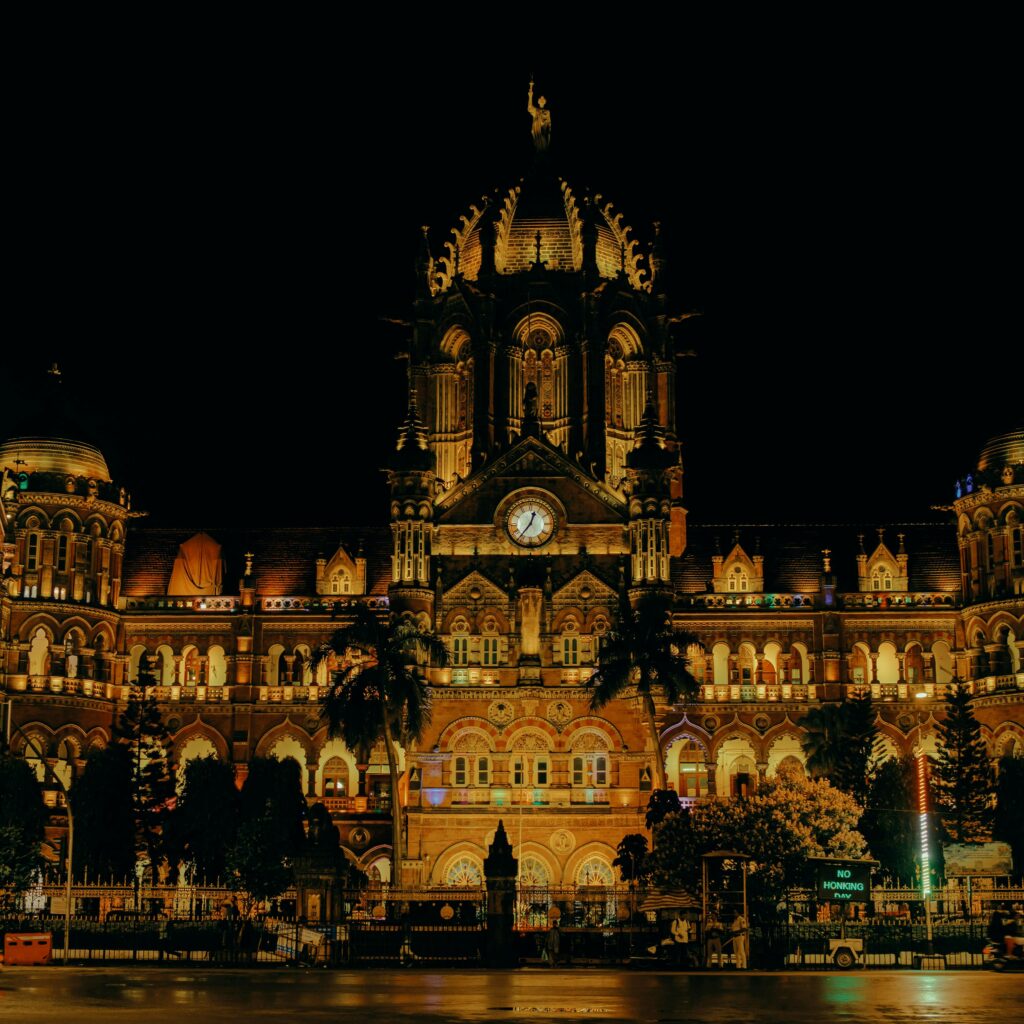
Introduction:
Chhatrapati Shivaji Maharaj Terminus (CSMT), formerly known as Victoria Terminus, stands proudly as one of Mumbai’s most iconic landmarks and a testament to the city’s rich history and architectural heritage. This bustling railway station is not merely a transportation hub but also a symbol of India’s colonial past and its journey towards independence.
History:
The CSMT Train Station has a storied history that dates back to the late 19th century. Designed by the British architect Frederick William Stevens, construction began in 1878 and was completed a decade later in 1888. The station was originally named Victoria Terminus in honor of Queen Victoria, but after India gained independence in 1947, it was renamed Chhatrapati Shivaji Maharaj Terminus in tribute to the Maratha warrior king.
Architecture:
CSMT’s architecture is a mesmerizing blend of Victorian Gothic and traditional Indian influences. The imposing structure features a stunning combination of turrets, spires, and arches, reminiscent of traditional Indian palace architecture. The intricate detailing on the façade includes sculptures representing various aspects of Indian life, history, and mythology. The fusion of Western and Indian architectural styles makes CSMT a unique masterpiece that continues to captivate visitors.
The Main Dome:
One of the most distinctive features of CSMT is its magnificent central dome. Rising gracefully above the station, the dome is adorned with a striking combination of stained glass and intricate latticework. The stained glass windows depict different scenes, ranging from historical events to traditional Indian motifs. The play of light through these windows creates a mesmerizing kaleidoscope of colors inside the station.
Heritage Status:
Recognizing its historical and architectural significance, Chhatrapati Shivaji Maharaj Terminus was designated a UNESCO World Heritage Site in 2004. This prestigious recognition underscores the station’s importance not only to Mumbai but also on a global scale. CSMT stands as a living monument, representing the convergence of cultures and the resilience of a city that has withstood the tests of time.
Railway Heritage:
Apart from its architectural grandeur, CSMT is a vital railway junction connecting Mumbai to various parts of India. It serves as a hub for both suburban and long-distance trains, facilitating the movement of millions of passengers daily. The distinctive “Mumbai Local” trains, an integral part of the city’s lifeline, have their origin and termination at CSMT.
Modern Amenities:
While preserving its historic charm, CSMT has also evolved to meet the demands of modern travel. The station now boasts state-of-the-art facilities, including digital information boards, Wi-Fi connectivity, and other amenities to enhance the passenger experience. The juxtaposition of the old and the new at CSMT reflects Mumbai’s dynamic spirit, where tradition seamlessly blends with progress.
Conclusion:
Chhatrapati Shivaji Maharaj Terminus stands not only as a transportation hub but as a living testament to Mumbai’s rich history and architectural legacy. Its intricate design, historical significance, and UNESCO World Heritage status make it a must-visit destination for both locals and tourists. As the trains continue to arrive and depart, CSMT remains a symbol of Mumbai’s resilience, connecting the past with the present and promising a vibrant future.
Related Blogs-